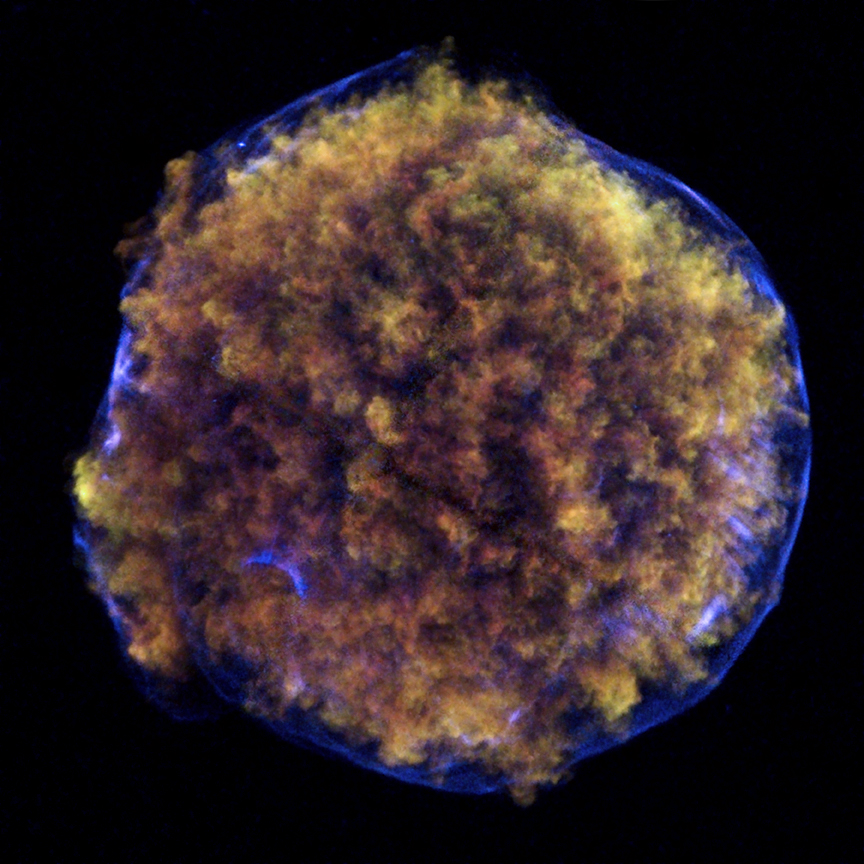
This new image of Tycho's supernova remnant, dubbed Tycho for short, contains striking new evidence for what triggered the original supernova explosion, as seen from Earth in 1572. Tycho was formed by a Type Ia supernova, a category of stellar explosion used in measuring astronomical distances because of their reliable brightness.
Low and medium energy X-rays in red and green show expanding debris from the supernova explosion. High energy X-rays in blue reveal the blast wave, a shell of extremely energetic electrons. Also shown in the lower left region of Tycho is a blue arc of X-ray emission. Several lines of evidence support the conclusion that this arc is due to a shock wave created when a white dwarf exploded and blew material off the surface of a nearby companion star (see accompanying illustration below). Previously, studies with optical telescopes have revealed a star within the remnant that is moving much more quickly than its neighbors, hinting that it could be the companion to the supernova that was given a kick by the explosion.

Other details of the arc support the idea that it was blasted away from the companion star. For example, the X-ray emission of the remnant shows an apparent "shadow" next to the arc, consistent with the blocking of debris from the explosion by the expanding cone of material stripped from the companion. This shadow is most obvious in very high energy X-rays showing iron debris.
These pieces of evidence support a popular scenario for triggering a Type Ia supernova, where a white dwarf pulls material from a "normal," or Sun-like, companion star until a thermonuclear explosion occurs. In the other main competing theory, a merger of two white dwarfs occurs, and in this case, no companion star or evidence for material blasted off a companion, should exist. Both scenarios may actually occur under different conditions, but the latest Chandra result from Tycho supports the former one.
more
http://chandra.harvard.edu/photo/2011/tycho2/